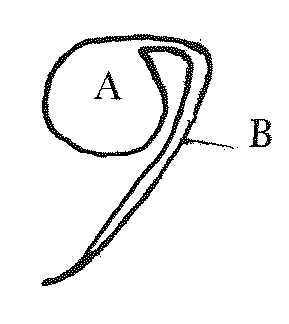To J. D. Hooker 27 July [1861]1
2. Hesketh Crescent | Torquay
July 27th
My dear Hooker
You cannot conceive how the Orchids have delighted me.2 They came safe, but box rather smashed: cylindrical old cocoa or snuff cannister much safer.— I enclose Postage.— As on account of movement I shall allude to what I suppose is Oncidium, to make certain is enclosed flower with crumpled petals this genus.—3 Also I most specially want to know what enclosed little globular brown Orchid is. I have only seen pollen of a Cattleya on a Bee,4 but surely have you not unintentionally sent me what I wanted most (after Catasetum or Mormodes) viz one of the Epidendreæ?!—5 I particularly want (& will presently tell you why) another spike of this little Orchid, with older flowers, some even almost withered, as the rostellum evidently does not come into action soon: I think only way would be to tie spike to thin elastic stick & jam stick in cannister the stick also serving to keep piece of damp blotting paper or anything else from touching the flowers. Why I want to study rostellum is that the pollen is intermediate between the two great types, as I daresay may be well known.
 (A) is waxy with no threads— (B) consists of a mass of pollen-grains united by elastic threads, & has exactly the structure of pollinia of Epipactis. So that (B) is in part functionally a caudicle, in structure a mass of pollen. I believe this explains the genesis of the caudicle of Orchis. By abortions of parts from this pollinium, almost any other could be made. Hence I am inclined to look at this as the prototype, & I am intensely curious to understand well the rostellum.6
(A) is waxy with no threads— (B) consists of a mass of pollen-grains united by elastic threads, & has exactly the structure of pollinia of Epipactis. So that (B) is in part functionally a caudicle, in structure a mass of pollen. I believe this explains the genesis of the caudicle of Orchis. By abortions of parts from this pollinium, almost any other could be made. Hence I am inclined to look at this as the prototype, & I am intensely curious to understand well the rostellum.6
Did you not think that Stelis was all in bud; I did, for the sepals were so exactly closed; but as yet, I have only one flower, that on apex, which had not been visited by some insect & had its pollinia removed. Can you tell me whence (what country) this Stelis comes, as it is so attractive to British Insects?—7
Can you easily tell me name of larger brown orchis in bud with curved peduncles? I have not yet examined it though I have worked all day.—
I grieve to hear that I cannot see an Arethusa (Vanilla belongs to same type I see in Lindley’s Veg. K.) for then I shd. have seen all great leading types.—8 You have given me intense enjoyment.—
Yours affectly & tired | C. Darwin
I am sorry to hear about death of Baby.—9 William soon joins Bank. William has been examining seeds of Groundsell,—wonderful case10
Footnotes
Bibliography
Correspondence: The correspondence of Charles Darwin. Edited by Frederick Burkhardt et al. 29 vols to date. Cambridge: Cambridge University Press. 1985–.
EB: The Encyclopædia Britannica. A dictionary of arts, sciences, literature and general information. 11th edition. 29 vols. Cambridge: Cambridge University Press. 1910–11.
Lindley, John. 1846b. The vegetable kingdom. London: the author.
Lindley, John. 1853. The vegetable kingdom; or, the structure, classification, and uses of plants, illustrated upon the natural system. 3d edition with corrections and additional genera. London: Bradbury & Evans.
Orchids: On the various contrivances by which British and foreign orchids are fertilised by insects, and on the good effects of intercrossing. By Charles Darwin. London: John Murray. 1862.
Summary
On orchids supplied by Kew; homologies of pollen and rostellum.
Letter details
- Letter no.
- DCP-LETT-3220
- From
- Charles Robert Darwin
- To
- Joseph Dalton Hooker
- Sent from
- Torquay
- Source of text
- DAR 115: 107
- Physical description
- ALS 4pp
Please cite as
Darwin Correspondence Project, “Letter no. 3220,” accessed on 30 November 2024, https://www.darwinproject.ac.uk/letter/?docId=letters/DCP-LETT-3220.xml
Also published in The Correspondence of Charles Darwin, vol. 9


